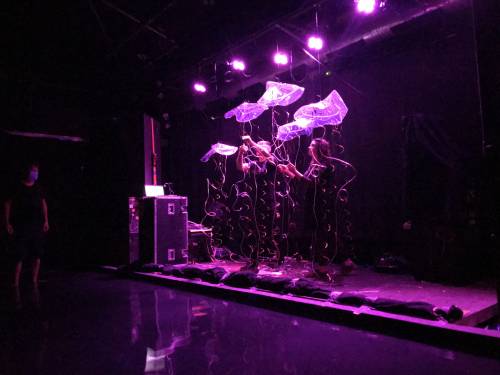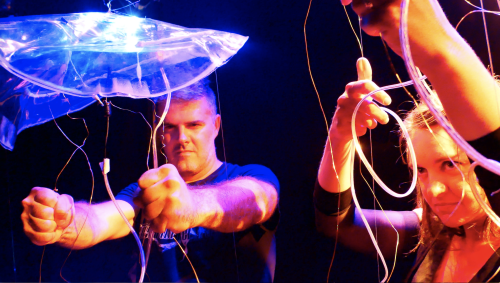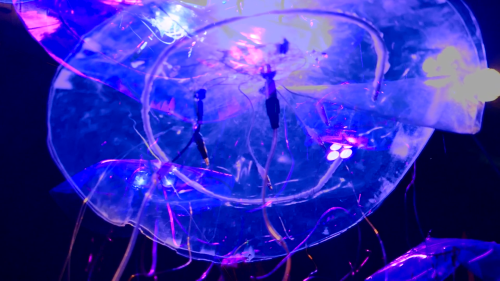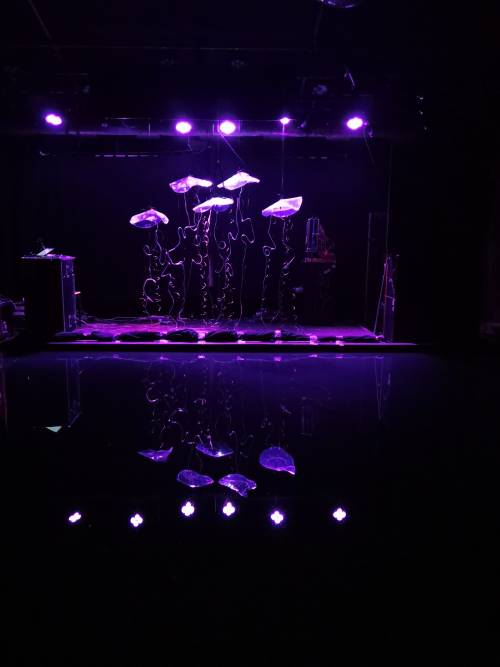Blooms





Solar Return, alias Jenny Pickett and Julien Ottavi, have been developing a prototype for an electronic instrument and performance that explores the paradigm of the ctenocene
Background: Moving across the oceans in synchronised blooms, the Jellyfish is an entity completely in symbiosis with it environnement, their masses and growth directly reflect its surroundings. Jellyfish are important and often conspicuous components of ecosystems: A couple of years ago we came across hundreds of jellyfish buried in the sandbanks of the Loire estuary, our project originated from this epic encounter and our observation of this phenomena occurring with increasing regularity in european waters and elsewhere. We observe this phenomena all over the world, the multiplication and the invasion of the jellyfish.
“Jellyfish thrive on the chaos humans create. Overfishing wipes out their competitors and predators; warmer water from climate change encourages the spread of some jellies; pollution from fertilisers causes the ocean to lose its oxygen, a deprivation to which jellyfish are uniquely tolerant; coastal developments provide convenient, safe habitat for their polyps to hide. In addition, the great mixing of species transported across the world in the ballasts of ships opens up new, vulnerable ecosystems to these super-adaptors.”
Development: Taking the idea from the jellyfishes sensory ecology as a warning system and a starting point, we have been developing these DIY instruments and composition for BLOOMS. Jellyfish are composed of a giant nerve system; for our performance we imagined this nerve system as an audio synth that is played with TOUCH. The performance will explore chaotic patterns and use absurd circuits using the electronics to produce autonomous modular instruments which affect the space by producing sound, light and movement with an instrument specific virtuosity of touch. The “Jelly-synths” are played by tactile gestures and touch on brass wires that react to both the perspiration and pressure of the skin, to produce numerous frequencies and rhythms through different combinations and methods of handling,mastering the jelly-synths and interpreting a composition.
Extending the Blooms across mobile devices and the internet, a synchronised chaos is introduced to the performance where streaming and participation become key.
Blooms experiments with the movement of sound in the performance that is driven by a “Universal Mind '' (connecting with the ether or an instinctive telepathy). Participants were provided with a score for the BLOOMS device and had the option of using a web interface to manipulate the sound and composition of the performance from a distance or one of eleven singular neuron phone apps. Each app allowed the user to manipulate one element of the sound in the performance space.
This project was first initiated thanks to iii collectives invitation to a residency in the Hague in 2015, with performances at No patent Pending (NL), and Piksel Festival (NO). Blooms was developed and performed for STWST48x6 More or Less at Ars Electronica 2020.